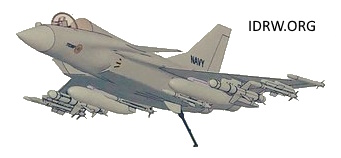SOURCE: AFI


The Indian Navy’s ambitious Twin Engine Deck Based Fighter (TEDBF) program, envisioned as a cornerstone of its aircraft carrier modernization, is grappling with significant hurdles. Major design changes, lack of robust support from the Ministry of Defence (MoD) due to the program’s estimated cost of ?14,000 crore, and slow progress in critical design stages have cast doubts on the Navy’s plan to replace its accident-prone MiG-29K fleet by 2035. With the program yet to complete its Preliminary Design Review (PDR) and Critical Design Review (CDR) stages as of June 2025, the Navy may be forced to operate the aging MiG-29K well into the 2040s, posing risks to pilots and operational readiness.
The TEDBF, designed as a 5-minus generation fighter jet with a Maximum Take-Off Weight (MTOW) of 26 tons, was intended to be a cutting-edge deck-based fighter tailored for India’s indigenous aircraft carriers, including INS Vikrant and the planned INS Vishal. Developed by the Aeronautical Development Agency (ADA) in collaboration with Hindustan Aeronautics Limited (HAL), the program aimed for a first flight by 2026, with operational induction by 2035. However, the program’s progress has been hampered by persistent delays.
As of mid-2025, the TEDBF has not completed its PDR stage, a critical milestone in finalizing the aircraft’s design. The subsequent CDR, which locks in the detailed design for prototype development, remains further off. Experts estimate that completing these stages and securing Cabinet Committee on Security (CCS) approval could take another three to four years, pushing prototype development to 2028 or beyond. This timeline severely disrupts the Navy’s goal of phasing out the MiG-29K, which has been plagued by reliability issues and accidents since its induction in 2010.
Unlike the Air Force’s Advanced Medium Combat Aircraft (AMCA) program, which focuses on a land-based 5th-generation fighter, the TEDBF faces unique challenges due to its deck-based design. Developing a carrier-capable fighter requires specialized engineering to withstand the stresses of catapult launches and arrested landings, alongside compact dimensions for carrier storage and operations. The TEDBF’s entirely new design, rather than an adaptation of an existing platform, adds further complexity, demanding extensive testing and validation.
The Navy’s decision to pursue a 5-minus generation platform—featuring advanced avionics, stealth characteristics, and supercruise capabilities—reflects its aim to bridge the gap between 4.5-generation fighters like the MiG-29K and fully stealthy 5th-generation platforms. However, this ambition has driven up costs, with the MoD reportedly hesitant to commit the estimated ?14,000 crore without clearer timelines and assurances of success. The lack of firm financial backing has slowed progress, leaving the program in a state of uncertainty.
The delays in the TEDBF program have serious implications for the Navy’s operational capabilities. The MiG-29K, originally acquired to equip INS Vikrant and INS Vikramaditya, has faced persistent maintenance challenges and a troubling accident rate, with several crashes attributed to engine and airframe issues. Continuing to operate these aircraft into the 2040s, as now seems likely, could endanger pilots and compromise the Navy’s ability to project power effectively.
The MiG-29K’s limitations are particularly concerning given the evolving maritime security environment in the Indo-Pacific, where regional powers are rapidly modernizing their naval aviation capabilities. Without a modern, reliable carrier-based fighter, the Navy risks falling behind in its ability to secure India’s maritime interests.
To get the TEDBF program back on track, urgent action is needed. First, the MoD must prioritize funding and streamline approvals to accelerate the design and prototyping phases. Collaboration with international partners for critical technologies, such as engines and avionics, could mitigate risks and reduce development time, though this must align with India’s “Aatmanirbhar Bharat” push for self-reliance. Additionally, the ADA and HAL need to expedite the PDR and CDR processes, leveraging lessons from the Tejas program to avoid past pitfalls.
The Navy could also explore interim solutions, such as upgrading the MiG-29K fleet or evaluating alternative carrier-capable fighters, to bridge the gap until TEDBF is ready. However, such measures would be stopgaps at best, as they cannot match the long-term strategic value of an indigenous, modern deck-based fighter.
NOTE: AFI is a proud outsourced content creator partner of IDRW.ORG. All content created by AFI is the sole property of AFI and is protected by copyright. AFI takes copyright infringement seriously and will pursue all legal options available to protect its content.